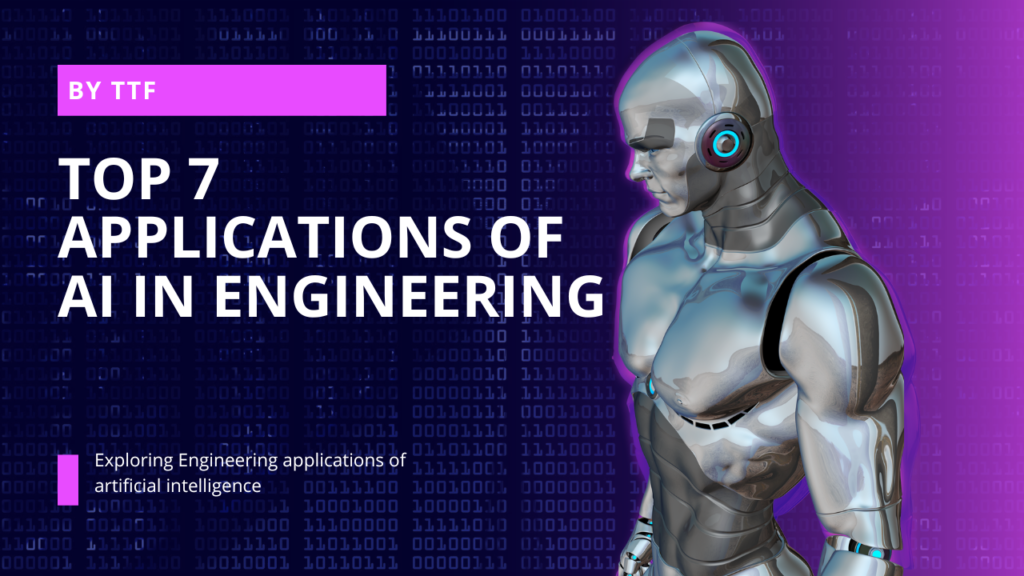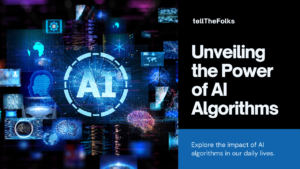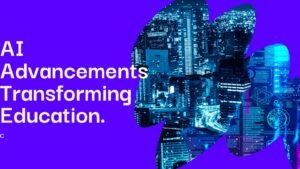
Artificial intelligence (AI) has transcended its buzzword status, firmly embedding itself in engineering and catalysing profound industry shifts. By crunching massive data sets, deciphering patterns, and guiding decision-making, AI is steering a fresh era of efficiency, innovation, and sustainability. For engineers aiming to lead the pack, grasping AI’s array of applications isn’t just advantageous—it’s critical.
In this comprehensive guide, we’ll uncover the top seven ways AI is reshaping engineering practices. From revolutionizing design methods to ensuring flawless quality control, this exploration promises insights for seasoned engineers and tech enthusiasts alike, unveiling the AI-fuelled future of engineering.
1. Predictive Maintenance
Predictive maintenance isn’t just about fixing things before they break. It’s like having a crystal ball for your equipment, foreseeing issues and scheduling maintenance before disaster strikes. AI plays a vital role, crunching data from sensors and systems to keep operations smooth, costs down, and machines running longer. Let’s embrace this tech wizardry to keep things ticking!
Harnessing Machine Data
AI algorithms consume data from various sources within the machinery, such as temperature, vibration, and operational loads. By establishing baseline patterns and identifying anomalies, AI can signal when maintenance or component replacement is needed, often well before any human technician would even notice the symptoms.
Real-world Implementations
Across industries, AI-driven predictive maintenance has become a staple. For example, in wind farms, AI algorithms analyze turbine performance data to predict component degradation. On the railways, AI examines the wear and tear of tracks. The predictive ability of AI is also invaluable in chemical and process engineering, where the integrity of equipment is critical to safety and compliance.
2. Design Optimization
Intelligent design optimization is a real game changer, particularly in complex systems where striking the perfect balance between performance, cost, and other variables can be a real challenge. AI, especially through generative design, empowers engineers to dive into numerous design possibilities, revealing solutions that may elude a human designer at first glance.
Intelligent design optimization revolutionizes complex systems by achieving the ideal balance between performance, cost, and more! AI and generative design give engineers a playground of design possibilities, unveiling solutions that even surpass human imagination!
Modeling and Simulation
In the field of product development, AI utilizes modern modeling and simulation tools to inform the design process. These tools can be loosely constrained by engineering specifications, allowing the AI to run simulations and suggest design changes that optimize performance metrics.
AI Tools in Action
Software like Autodesk’s Generative Design, which uses machine learning to feasibly generate thousands of design options, where any can be selected for detailed engineering simulation, is a prime example. This not only accelerates the design process but also leads to more efficient, cost-effective, and innovative products.
You may also like : Artificial Intelligence vs. Machine Learning
3. Quality Control
Ensuring exceptional product quality is paramount in all engineering endeavors. Leveraging cutting-edge computer vision and machine learning technologies, artificial intelligence demonstrates extraordinary capabilities. AI has the capacity to identify minute flaws that may escape human detection, thereby greatly enhancing quality control procedures. This proficiency not only elevates product dependability but also amplifies operational efficiency within manufacturing settings.
Precision in Product Inspection
AI systems are trained on vast image datasets that allow them to accurately identify irregularities in manufactured parts or finished products. The ability to detect these defects at such a granular level has significantly reduced waste and ensured consistency.
AI enhances product quality in engineering with computer vision & machine learning. Detects flaws imperceptible to humans, boosting quality control & operational efficiency in manufacturing.
Also Read Augmented Reality Scope and Benefits
Manufacturing Case Studies
In the automotive industry, AI systems analyze paint and surfaces for inconsistencies, while in electronics, they inspect soldering and wiring. Manufacturers have seen substantial quality improvements and decreased returns due to AI-enhanced quality control.
4. Supply Chain Management
Modern supply chains are like intricate puzzles, full of complexities that can feel overwhelming. But fear not! AI swoops in with its magic wand of advanced analytics and process automation, unlocking doors to efficiency, workflow optimization, and top-notch operational performance. By diving into the AI realm, businesses can conquer supply chain challenges like brave knights, armed with insights and automation, forging a path of greater efficiency and effectiveness.
Forecasting and Optimization
AI systems can analyze historical data and market trends to make accurate demand forecasts. This is crucial for minimizing stockouts and overstock situations, which can be costly in terms of revenue and storage.
Logistics and Route Optimization
In the logistics sector, AI-powered analytics are used to optimize the delivery routes, reduce fuel consumption, and lower emissions. This optimization can be dynamic and change in real-time to accommodate unforeseen circumstances.
5. Robotics and Automation
The fusion of cutting-edge Artificial Intelligence (AI) with state-of-the-art robotics is revolutionizing the landscape of manufacturing. This dynamic duo empowers unparalleled precision, flexibility, and speed in engineering tasks, elevating efficiency and productivity across a multitude of industries.
Task-specific AI
Robotics with AI capabilities can now handle complex tasks that once required manual intervention. By learning and adapting to their environment, they can work alongside human counterparts, increasing operational efficiency and ensuring safety.
Revolutionizing Job Sites
In construction, we’re witnessing robots that can lay bricks with unrivaled accuracy, while in manufacturing, robots are not just assembling parts but also collaborating with engineers to address dynamic and evolving production needs.
6. Environmental Impact Assessment
Artificial Intelligence (AI) is changing engineering, particularly in environmental impact assessment. This key role involves predicting and understanding the environmental effects of various engineering projects. Through AI, engineers can develop sustainable initiatives and promote environmental awareness and responsibility.
Simulation and Prediction
AI’s impressive ability to swiftly process and thoroughly scrutinize vast amounts of environmental data is pivotal in forecasting the potential effects of major endeavours like building a new interstate or industrial facility. By running these simulations, AI helps assess the impact on local ecology, air, and water quality, empowering smarter decision-making.
Preemptive Analysis
Engineers can now identify potential issues early on and develop mitigating strategies, ensuring that new projects are as environmentally friendly as possible. This ability to predict and prevent adverse effects is indicative of a more sustainable approach to engineering.
7. Natural Language Processing (NLP)
Engineering documentation, especially in the context of legal compliance documents or design specifications, can be overwhelming in both volume and complexity. AI’s natural language processing capabilities are addressing this challenge by aiding in the comprehension and extraction of key insights from textual data.
Streamlining Research and Compliance
Extraction and summarization of large volumes of text allow for faster and more accurate research. In the context of regulatory compliance, NLP can sift through vast legislative documents to ensure that engineering projects meet all requirements.
Easing Collaboration
By making technical documents more accessible, NLP is improving collaboration among engineers, project managers, and stakeholders. This shared understanding fuels innovation and helps teams operate with greater clarity and efficiency.
Conclusion
The infusion of AI into engineering is rapidly reshaping the realm of possibilities across industries. From swiftly detecting machine faults to fostering seamless collaboration between robots and humans, the future of engineering is undeniably AI-driven. This not only ensures effective and cost-efficient solutions but also unlocks new horizons in design, sustainability, and excellence.
By embracing and leveraging these AI advancements, engineers can not only stay ahead of innovations but also lead the development of the next era of engineering marvels. The time to embrace AI in your engineering pursuits is now, with endless potential limited only by our creativity!
Share to
Frequently Asked Questions (FAQ)
Predictive maintenance refers to the process of using data analysis tools and techniques to detect anomalies in operation and potential defects in equipment and machinery before they result in failure. AI contributes by analyzing vast amounts of data from machinery sensors to predict failures before they happen, thus reducing downtime and maintenance costs.
In engineering, AI assists in design optimization by analyzing multiple design alternatives based on predefined criteria. Through processes like machine learning and simulation, AI can predict the outcomes of different designs, helping engineers to select the most efficient and cost-effective option.
AI transforms supply chain management by providing predictive analytics for demand forecasting, optimizing routes for logistics, and automating warehouse operations. This not only increases efficiency but also significantly reduces operational costs.
Related Posts

7 Best Social Media AI Tools in 2024
Explore innovative solutions in latest social media AI tools designed to transform your online presence, streamline content creation, and optimize engagement.

Artificial Intelligence Algorithms
Artificial Intelligence algorithms are the backbone of modern intelligent systems, enabling machines to perform tasks that typically require human intelligence.

Innovations in AI for Education
Discover how Innovations in AI (Artificial Intelligence) is transforming education with personalized learning paths, intelligent tutoring systems, and predictive analytics for enhanced learning experiences.
